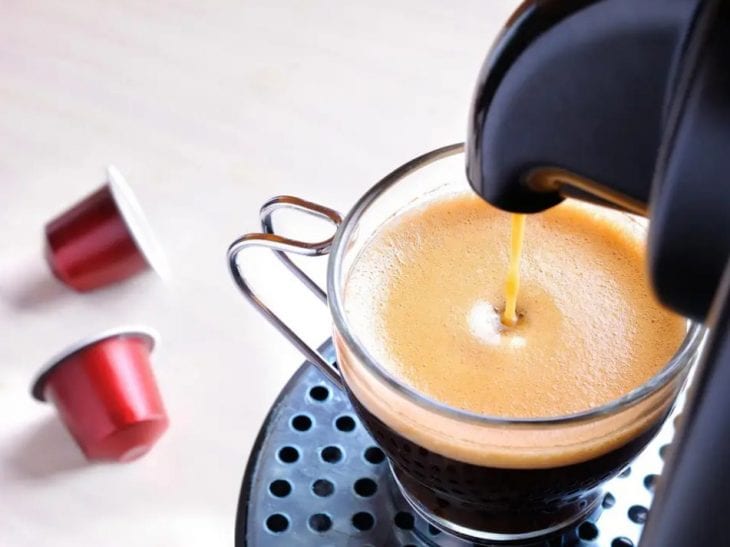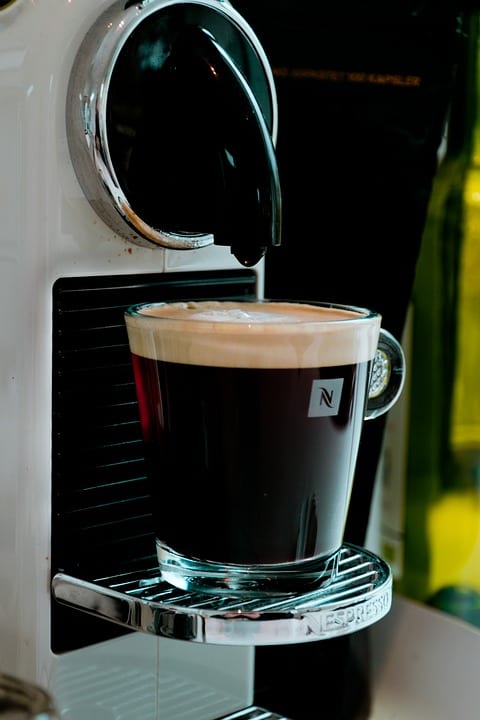Contents
The Weigh-in: What to Expect
Single-cup, pod-style coffee makers are all the rage these days. From your office breakrooms to kitchen counters, everyone seems to be using one. We’ve decided to put the two most popular types of coffee maker to the test. Here’s what we’ll cover in this caffeinated championship:
- We’ll go over both machines in detail, and talk about how they work and what they do.
- We’ll compare both types of pods and look at generic options that are available.
- We’ll compare the coffee itself, to see how it tastes.
- Finally, we’ll look at the environmental impact of both machines.
Let’s get ready to rumble!
Round 1 – The Machines
In the left corner, we have Keurig. This is the brand that started it all. They produce a variety of machines, but they’re all pretty similar in terms of function.
To begin with, there’s a water reservoir that’s kept warm as long as the machine is on. Since it only takes about a minute to warm the water up, most homeowners find it easiest to leave the machine off when they’re not using it. However, offices usually leave their Keurig running for convenience.
From the reservoir, the water is run through a filter pod full of coffee grounds, and dispensed you’re your mug. Keurig machines make a standard cup of coffee in a variety of strengths and flavors. Users can select how much coffee they want to brew, usually in 8, 12 and 16 ounce sizes.

Source: independent.co.uk
In the right corner, we have Nespresso. These machines have a smaller footprint than similar Keurig, but they pack the punch of a heavyweight. Like Keurig, there are several models available.
Nespresso machines cost more than Keurig machines of similar capacity. Their smaller footprint is mostly due to their smaller reservoirs. Because these machines make small cups of espresso, rather than full cups of coffee, they don’t need as much water.
For the same reason, Nespresso machines work much faster than Keurig. They’ll shoot out a cup of espresso in under 20 seconds. On the other hand, you’ll be drinking a much smaller cup, which may be an issue if you’re used to starting your day out by double-fisting Ventis.
Round 2 – The Pods
Keurig pods are bigger than Nespresso pods, because they’re made to brew a larger cup. The grounds inside are a medium coarseness, about what you’d find in a tin of grocery store coffee grounds.
One reason Keurig machines is so popular is because there’s a huge market for pods. Besides their own branded pods, Keurig launched a partnership with Green Mountain Coffee Company to release dozens of styles of coffee in compatible pods.
If that’s not enough, numerous independent coffee companies and even a few grocery chains produce their own lines of K-cups. Altogether, there are literally hundreds of coffees available in Keurig compatible pods. You have as much selection with your Keurig as you will with a traditional coffee machine.
Nespresso pods are much smaller than Keurig pods, and the coffee inside is much finer. It has the consistency of salt, which is on the coarse side for an espresso but works well with the water injectors on their machines.
Your pod costs will depend on where you live. Nespresso brand pods are expensive, and they’re the only choice available for US and Canadian customers. This is because North American Nespresso machines make larger cups of espresso than their global machines, and use the larger VertuoLine pod style.
There are no generic VertuoLine pods available, and Nespresso hasn’t announced any plans to license them. Outside the US and Canada, there are lots of generic pod competitors with much lower prices.

Nespresso Warm Cold Couple Coffe Love Coffe Cup
Round 3 – The Coffee
The quality of coffee you’ll get from your Keurig coffee maker depends on what you put into it. If you use their branded coffee, the Green Mountain pods, and other pods from reliable sellers, you’ll generally get good results. Beware of buying from sellers you haven’t heard of; their pods may not be any good.
Regardless of whether you choose a medium roast, a Colombian coffee, a dark roast, a decaf or a hazelnut, you’ll get a cup of coffee that’s similar to what you’d get from a standard drip coffee maker. The main advantage of a Keurig is the convenience of brewing single cups without a lot of cleanup.
Nespresso machines make a surprisingly good cup of espresso, considering they’re a pod-style machine. This is largely thanks to the water injectors, which cause the hot water to swirl through the grounds instead of being forced directly through. This causes the espresso to form a rich, frothy crème on top like you’d expect from a coffee shop espresso.
In terms of strength, Nespresso coffee is stronger and more caffeinated ounce for ounce. However, since even a small Keurig brew is several times the size of an espresso, there’s more caffeine in a cup of Keurig coffee.
Bonus round – The Environmental Impact
Both of these coffee makers have recently come under fire for producing a lot of waste in the form of discarded pods. In terms of overall waste using standard pods, you’ll make less trash with a Nespresso machine simply because their pods are so much smaller. On the other hand, many major cities will recycle K-cups, making the waste factor a moot point.
If you’re very environmentally concerned, there are several reusable Keurig pods available. This can be less convenient, and partially defeats the purpose of a pod-style coffee maker, but it produces no plastic waste at all.

Source: YouTube
Conclusion
The battle between these two pod-style coffee makers is like a fight between two boxers with completely different styles. On any given day, you may prefer one or the other depending on what you’re in the mood for.
The Nespresso is more expensive and the pods cost more. It also makes much smaller cups. That said, it’s an espresso maker, not a coffee maker, and it makes a really nice espresso in a flash.
The Keurig takes up more space, and the coffee quality can vary depending on what you put in it. But if you want a big, steaming mug of joe, it’ll make one for you quickly.
We call this match a draw.
